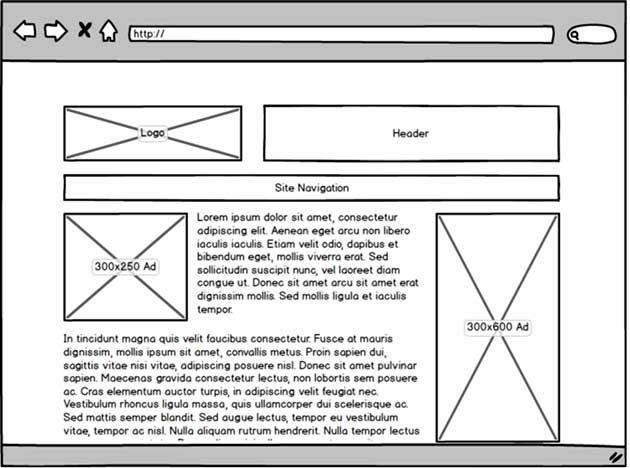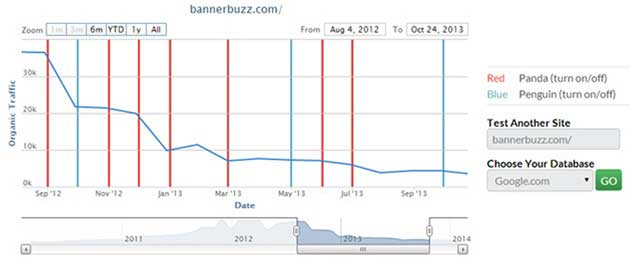Over the last few years, I have been dealing with more and more startup entrepreneurs who have successfully bootstrapped their businesses. They've had to in a time when funding a new business isn't easy. Banks aren't lending, and venture capital is harder to come by.
Bootstrapping requires startup entrepreneurs to be creative and efficient, because they don't have multimillion-dollar marketing budgets or teams of people to help them. Here are 10 things I have learned from startups, much of which can be applied to businesses large or small.
1. Measure everything
If you are doing any sort of online marketing, you need to be tracking your website traffic and conversions properly. Doing so is not expensive, but it can take a bit of time to set up.
Google Analytics is your friend. It is free and easily installed, and the data you can collect is extremely useful whether you are a small or large business. (The 2014 Kissmetrics guide to Google Analytics is one of the best I've found.)
With the additional features of Google's Universal Analytics, tracking is more advanced than ever before. Universal Analytics allows you to track a single user across multiple devices.
For example, a user might visit you from a Tweet on mobile, browse your site, leave, and then come back in a week to make a purchase via a desktop. In previous versions of Google Analytics, if the user didn't convert on first visit, you would have no way of attributing the sale (or the "assist") back to the original Tweet. Now you do.
2. Test first, then scale
Test your landing pages on a small sample group before scaling. Nothing is worse than launching a full blown campaign if your landing pages have usability or other obvious errors.
Regardless of the size of your campaign or available resources, there is no excuse not to test first. If you do not have the luxury of a whole team to help with feedback and testing, consider a service like FiveSecondTest. Don't forget: What you might consider usable or intuitive might not be to a casual visitor. By getting feedback from real users early on, you can save yourself considerable time down the line by addressing issues early.
3. Keep it simple
With any business it is tempting to overcomplicate things. A complex and detailed plan often looks more impressive than something more basic, so the simplest (and often best) ideas can be overlooked, especially in larger companies.
Simple ideas are often best, however. Billion-dollar companies have been built from very basic initial concepts that were highly appealing to the mass market.
Another benefit of creating something simple (whether a product, marketing campaign, process, etc.) is that it is easy to replicate and teach, which aids scalability and explains why so many of these small ideas can grow so big.

The Post-It note has sold billions of units (Photo by Katy Warner)
4. Improve a lot of things by a little bit
"The Aggregation of Marginal Gains," coined by David Brailsford, seeks to break down an entire process and improve each element of it by a small amount. When it's reassembled, the overall result would be a large improvement.
As a busy marketer, you can easily lose track of the small things and focus only on the big wins and major areas for improvement. By adopting a marginal gains mentality, you should be able to create improvements from day one. To use this methodology practically, consider creating a master list of tasks and then breaking each down into variables that could be improved.
For example, if you are looking at design and content of a Web page you could break it down as follows:
- Headline
- Navigation
- Copy
- Readability
- Fonts
- Images
- Trust Signals
- Video
- Breadcrumbs
- Footer
- Ad Placements
Look to work through each in order, and make improvements at every stage. Anyone can do this; it does not require a full redesign, so progress can be made cheaply and effectively. Some improvements will be simple (such as adding more trust signals), others might be harder (such as improving the footer). Some will not directly affect your revenue (such as fonts), others will (such as ad placements).
Below is a wireframe of new ad placements we used on a website that previously had a 3% CTR on its ads. The new layout improved that to 6% with no negative effects on bounce rate or other usability signals.

5. Make the most of free tools...
A common myth that many marketers hold is that content marketing is an expensive luxury; but with so many affordable tools and readily available data sources on the Web, it's easier than ever to create content that isn't going to break the bank.
For example, here are some great free tools to create good-looking visualizations that can be embedded straight into a blog post:
6. …and free data sources
Thousands of open source data resources are available for use. If you are comfortable with handling large amounts of data and can find an interesting story to tell, then here's a huge list of them to get you started. If there isn't a free data resource available, you could approach a government agency or relevant nonprofit with a Freedom of Information request.
For example, Will O'Hara contacted the ICO (Information Commissioner's Office) about websites that had received complaints regarding recent "Cookie Law" changes (UK); surprisingly, only 18 websites had received more than one complaint in 2013.
7. Look for interesting stories
If you have a little cash to spend and would prefer to get your information from people in your sector ,then carrying out a survey is a good way to go. The most important thing here is that when you get your data back you should look for an interesting story.
For example, Stacey Cavanagh surveyed 1,000 US citizens, asking them to name a British city other than London, spending $100 using Google Consumer Surveys.
When the results came back, and included both Paris and Wales as popular choices, she knew she had an interesting story, which was backed up by press attention and got featured on Buzzfeed and Huffington Post.

8. Repurpose internal resources
Most businesses create large amounts of content strictly for internal use, but with a little editing a lot of that information could be used as content that your customers will find educational or otherwise useful.
A great place to start is company presentations that could be uploaded to a document-sharing website such as SlideShare, which is like the YouTube of document sharing; it can generate a lot of awareness of your content, especially if you manage to make it as one of the most popular pieces of content on a given day.
Other ideas:
- Turn customer service training guides into an FAQ page for your site.
- Use internal sales and marketing memos to create blog posts.
- Take photographs of your office/local area and upload them to Flickr with creative commons rights.
9. Become a curator
Content curation is the process of collecting, organizing, and displaying information relevant to a particular topic or area of interest.
By bringing together other people's content you can create resources that your users will find useful. Here are five models of content curation:
- Aggregation is about pulling together all the relevant information about a topic into one location.
- Distillation is the process of curating information sources into a more digestible format.
- Elevation is the act of compiling lots of smaller pieces of content to identify a long-term trend.
- Mashups involve compiling different content formats to create a different point of view.
- Chronology is the creation of a timeline of events about a topic.
An example of curating content to create a useful resource can be seen in our Website Penalty Indicator, where we have distilled the different Google Penguin and Panda updates into a timeline so people can see whether their website might have received a penalty.

10. Focus on the important things
However you look to improve your marketing methods, it is important to remain focused on the end goals: growth and profit. Although it is important to give marketing ideas sufficient time to flourish, tying everything back into profitability is the only sensible route.




